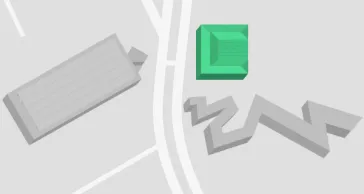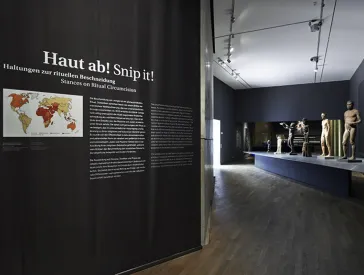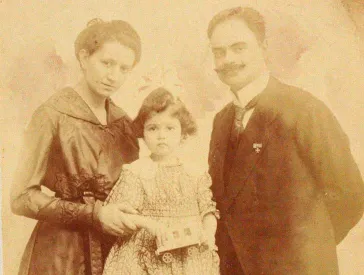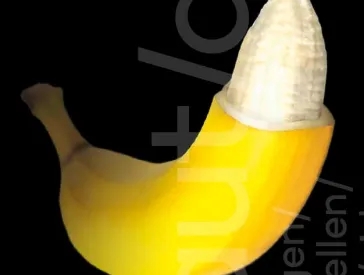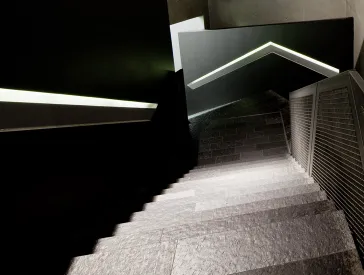
Haut ab!
Haltungen zur rituellen Beschneidung
Die Beschneidung von Jungen ist ein jahrtausendealtes Ritual. Laut Statistik ist ein Drittel der männlichen Weltbevölkerung aus unterschiedlichen Gründen beschnitten.
Mit der Ausstellung Haut ab! Haltungen zur rituellen Beschneidung gab das Jüdische Museum Berlin teils überraschende Einblicke in die Bedeutung dieses Rituals, über dessen religiöse und kulturhistorische Hintergründe wenig bekannt ist.
Trailer zur Ausstellung Haut ab! Haltungen zur rituellen Beschneidung, Film: Robert Loebel, Sound: Julian Terbuyken; Jüdisches Museum Berlin
Ouvertüre
Der Ausstellung war ein Skulpturenreigen vorangestellt, der die Frage nach dem Körper des Anderen stellte: Aufgegriffen wurden dort sowohl außereuropäische Körperzeichen als auch archaische Reminiszenzen an die Beschneidung im Alten Orient – etwa in Form der Standfigur Snofru-nefer, eines ägyptischen Hofbeamten aus der 5. Dynastie (ca. 2400 v. u. Z.).
Zu sehen war auch die hyperrealistische Skulptur Murray von Evan Penny (1998) und damit ein Verweis auf die Körperbilder der Gegenwart: Wie 70 Prozent aller US-Amerikaner ist diese Figur beschnitten.
Ausstellungsplakat mit dem Kampagnenmotiv
Round Table Trialog
Ausgehend vom jüdischen Konzept des Bundesschlusses, der über ein Körperzeichen besiegelt wird, beleuchtete die Ausstellung das Thema auch aus islamischer und christlicher Perspektive. Sie zeigte die Wurzeln des Rituals im Bund Abrahams mit Gott und untersuchte das Thema von der Beschneidung Jesu bis hin zu populärkulturellen Spuren in US-amerikanischen TV-Serien. Dabei kamen auch antisemitische und islamophobe Haltungen zur Sprache, die weit in die Vergangenheit weisen.
Judentum
Die Brit Mila ist eines der wichtigsten religiösen Gebote im Judentum. Die Ausstellung beleuchtete Gesetz und Brauchtum nicht nur mit Objekten, die zum Ritus selbst gehören, sondern auch mit solchen, die dessen Widerhall in Kunst und materieller Kultur zeigen.
Was ist Brit Mila?
Brit Mila (hebr. für Bund des Wortes), Beschneidung, rituelle Entfernung der Vorhaut bei Jungen am achten Tag nach der Geburt, Zeichen des Bundes zwischen Gott und dem Volk Israel
Unter den mehr als 60 Objekten und Kunstwerken aus internationalen Sammlungen war auch eine Beschneidungsbank aus Deutschland von etwa 1750, die sonst in unserer Dauerausstellung zu sehen ist. Sie spielt auch in der folgenden Animation eine zentrale Rolle:
Weitere Informationen zu dieser Beschneidungsbank finden Sie in unseren Online-Sammlungen
Islam
In der islamischen Gemeinschaft ist die Beschneidung gleichsam Pflicht und Glaubenstradition. Obwohl das Ritual im Koran nicht explizit erwähnt wird, gilt es als Prophetentradition in der Nachfolge Ibrahims und wird festlich begangen.
Die historischen Darstellungen und Objekte von Beschneidungsfesten, die in der Ausstellung zu sehen waren, zeugen von einer Vielfalt an Festtagstraditionen und deren Fortwirken bis in die Gegenwart.
Das traditionelle türkische Karagöz-Schattentheater war im Osmanischen Reich fester Bestandteil des Unterhaltungsprogramms bei Beschneidungsfeierlichkeiten. Hier sieht man Figuren aus Die Beschneidung, oder: Des Verwundeten Erfreuung des Karagöz-Meisters Emin Senyer und Ensemble aus Istanbul, das 2015 im Jüdischen Museum Berlin aufgeführt wurde; Jüdisches Museum Berlin, Foto: Jens Ziehe
Christentum
Auch in der christlichen Ikonografie spielt die Rezeption des Beschneidungsrituals eine bedeutende Rolle. Beschneidungsszenen wie etwa diejenige von Peter Paul Rubens verdeutlichen, dass die „jüdische Geburt“ Jesu und dessen Namensgebung am Tag der Beschneidung als Fest dargestellt und so auch innerhalb des Kirchenjahrs begangen wurden.
Die Ausstellung thematisierte aber auch die antijudaistischen Motive in den christlichen Bilderwelten, die sich bis hin zu den Darstellungen von Ritualmordbeschuldigungen verfolgen lassen.
Die Beschneidung Christi (Modello), Peter Paul Rubens, Genua, ca. 1605, Öl auf Leinwand; Gemäldegalerie der Akademie der bildenden Künste Wien
Beschneidungsdebatte 2012
2012 erklärte das Landgericht Köln die rituell begründete Knabenbeschneidung zur „einfachen Körperverletzung“. Das Urteil löste in Deutschland eine Debatte über das Ritual der Beschneidung aus, die international rezipiert wurde. Im letzen Raum der Ausstellung wurde diese Debatte aufgegriffen und das kontrovers diskutierte Thema in Dokumentationen, Filmclips und Interviews mal ernst, mal ironisch kommentiert.
Dieser Button stammt von der Kundgebung Auf Messers Schneide. Religionsfreiheit. Juden, Muslime, Christen für Toleranz & Menschenrechte am 9. September 2012 auf dem Bebel-Platz in Berlin; Jüdisches Museum Berlin, Foto: Jens Ziehe
Blick hinter die Kulissen: Beiträge zur Ausstellung „Haut ab! Haltungen zur rituellen Beschneidung“ (9)
Informationen zur Ausstellung im Überblick
- Wann 24. Okt 2014 bis 1. Mär 2015
- Wo Altbau 1. OG
Lindenstraße 9–14, 10969 Berlin
Zum Lageplan
Partner

Medienpartner





